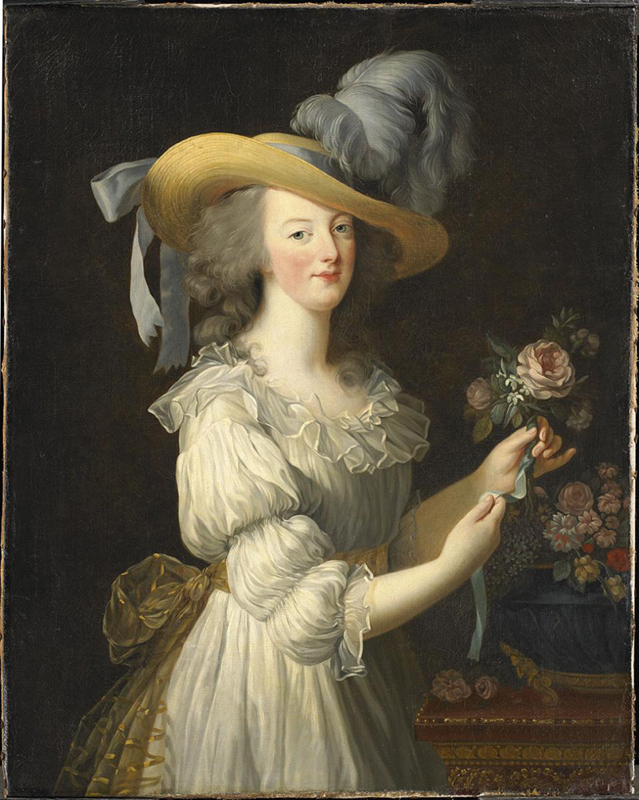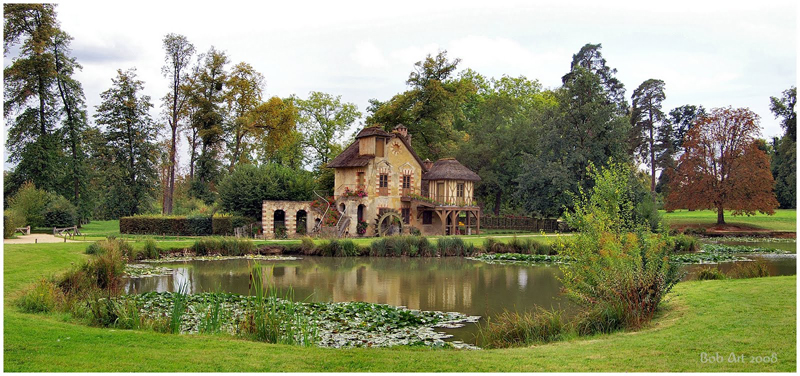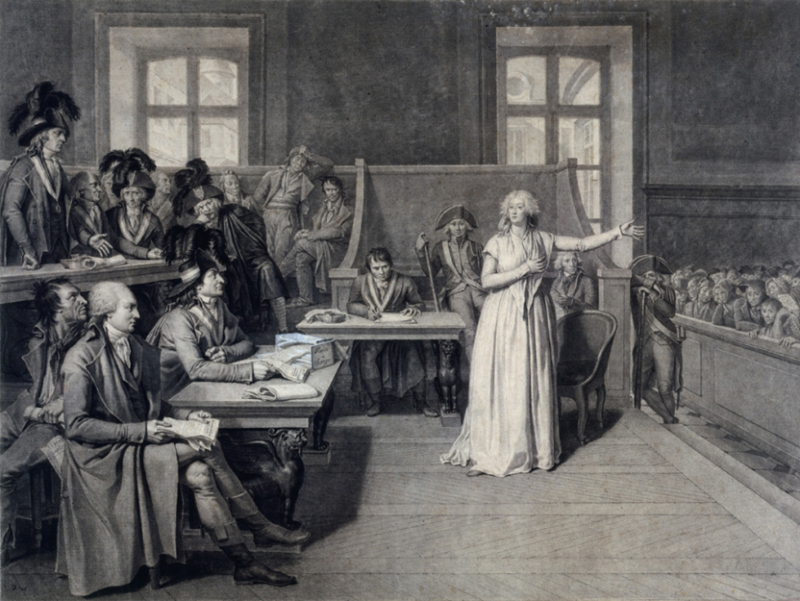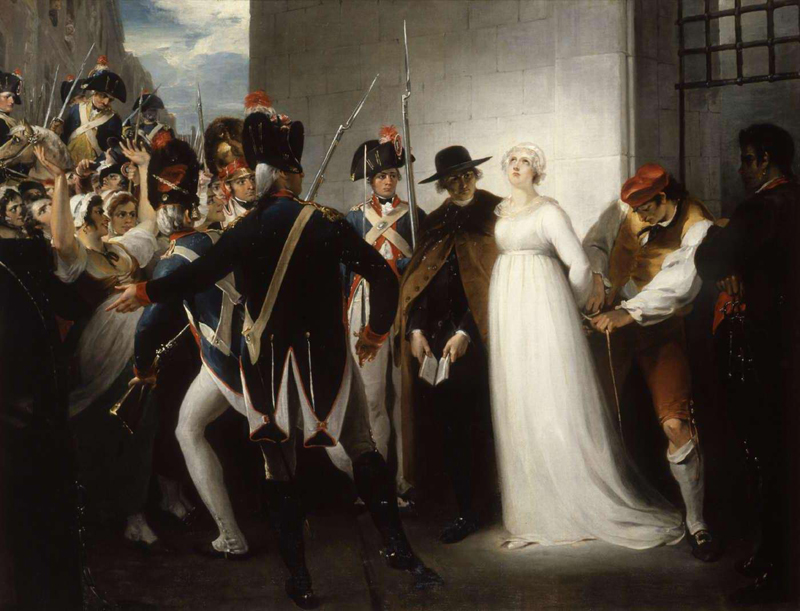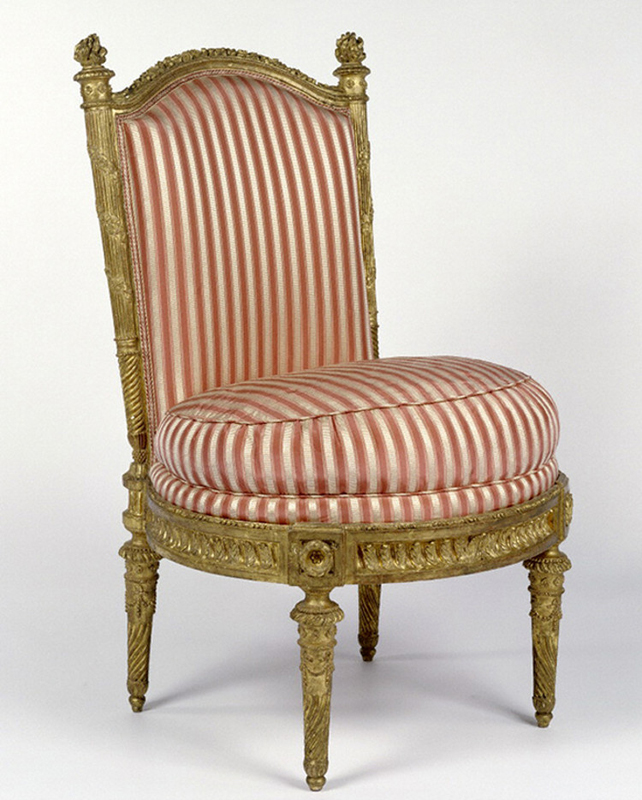Marie-Antoinette
скачать PDFMarie-Antoinette (1755-1793) is one of the most famous figures in the history of the Versailles Palace . Daughter of the Empress Maria Theresa of Austria (1717-1780) and of Francis I, Holy Roman Emperor (1708-1765), archduchess Marie-Antoinette was born in 1755 in one of the oldest and most powerful countries of Europe. At 14 years old, she was sent to France to be married to Louis, the Dauphin who would become Louis XVI (1754-1793), with whom she would later have four children.
The 1770 marriage between the daughter of the house of Austria and the heir to the crown of France was a very delicate and turbulent political affair that created as well as ruined careers and reputations in the French court. In fact, the political hostility between the two countries was deeply rooted, and Austria was an enemy of the French kingdom at the time. However, political alliances had changed, and young Marie-Antoinette arrived in France betrothed to the future King of France. The young princess was welcomed somewhat coldly by the general public and a number of important members of the court. Madame Adélaïde, daughter of Louis XV, was the first to nickname her "l’Autrichienne" (the Austrian), which in French rhymes with "chienne", the female dog. This nickname was also used during the Revolution.
During her time as future Queen of France, she stayed mostly in the background. The legend of Marie-Antoinette begins with her coronation in 1774. The young Queen was known to be frivolous and to spend a lot of money but was above all naïve and favored friendships that would prove to be fatal to her. She may have simply been too young to be queen, unwilling to accept the pressure from the court and to practice proper etiquette. In other words, she was reluctant to accept her duties as Queen.
Louis XVI put Marie-Antoinette in charge of amusing the court, which kept her away from politics. The queen attended horse races, organized balls, played music, scheduled several theater shows per week, and sometimes performed in plays herself. She was known for her lavish parties and expensive lifestyle. The queen spent a lot of time on her looks. Her hairdresser, Leonard, created a hairstyle with feathers for her that she particularly loved. The picture n° 3 shows one of the most famous eccentricities designed by the hairdresser, “à la Belle Poule”, which was made fashionable to celebrate the French victory of June 17th, 1778 over a frigate of the same name that belonged to the English.
Thanks to her taste in luxury, Marie-Antoinette had a greater impact on the arts than her husband did. In fact, she was the protector of many artists, such as singer Martin-Pierre d’Almivare (1772-1839), and she commissioned many craftsmen and artists to produce works for her: furniture, decorative objects, clothes and paintings. Thirty portraits of Marie-Antoinette by the famous artist Mme Vigé-Lebrun, a good friend of hers, still exist today (pictures 1 & 2). The Queen’s bedroom at the Palace of Versailles remains as it was the last Summer Marie-Antoinette lived there (picture 4). The Cabinet Doré (Gold Room) (picture 5), originally created for Marie Leczinska , was entirely redesigned in 1783 for the Queen based on drawings by Richard Mique, her favorite architect. Marie-Antoinette used this room to receive her friends or her children, to play the harp with her teacher M. Grétry (picture 6), or to pose for a portrait. The desk in the middle of the room was realized between 1783 and 1788 by Riesener, the Queen’s cabinetmaker, for the Hameau (the hamlet) (picture 7). The Queen also possessed a great collection of chinoiseries (pictures 8 & 9).
Marie-Antoinette is the only Queen that influenced Versailles Palace with her own taste. The "Louis XVI style” would be more accurately called the “Marie-Antoinette style”. This style features a penchant for pastoral and Antique motifs, and for simple, geometrical lines. The elegant portrait of Marie-Antoinette wearing a “gaule”- a muslin dress with a ribbon at the waist- and a straw hat on top of her hair kept loose is representative of this "laid-back" style (picture 10). The Queen's taste for fresh and cheerful nature, her preference for light colors and her refinement are all present in this painting.
Accustomed to the simple etiquette of Austrian palaces, the Queen could hardly bear the heavy rules of Versailles and the duties that came with her position. In order to escape from the pressure at Court, Marie-Antoinette spent most of her time in the private areas of the Palace: the Petit Trianon, a gift from Louis XVI, and especially the Hameau (the hamlet), a miniature farm village that she had entirely designed under the direction of Hubert Robert (picture 11). There, she enjoyed the taste of a "simple" life, surrounded by her children and friends. Her yearning for a more intimate lifestyle reflects the general aspiration of society at the end of the century.
Marie-Antoinette and her immense spending angered the people, while the country, crushed by debts, was nearing bankruptcy. Even though the young Queen became unpopular very quickly because of her expensive way of life, the Collier affair, in which she was unfairly accused, was the breaking point. After that, she was accused of all sorts of things. Unable to stop the crisis, Louis XVI powerlessly witnessed the storming of the Bastille and the end of the monarchy on September 22nd, 1792. After the execution of the king, the Queen was beheaded in October 1793, at the age of thirty-eight. Today it is known that her trial was fake (picture 13).
Her death is a historic milestone for the European monarchies, which turned her into a legend. The following year, William Hamilton (1751-1801) depicted her as a martyr, going from the jail to the guillotine (picture 14).









